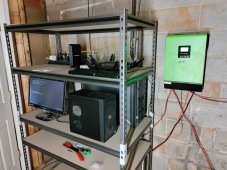wsteelenyc
New Member
- Joined
- Jul 14, 2021
- Messages
- 9
I am looking at a few hybrid inverters from MPP and Growatt and I'm curious if they can pull the excess load from the grid when the solar is not sufficient for a load. I.E. if I am making 600w but my load is 1000w will the excess be pulled from the grid or do they just switch to grid power entirely. I'm currently using a grid tie inverter with a limiter that measures the power draw and never puts back in more than I am using, but a hybrid inverter, assuming it does what I mentioned it could accomplish the same and more as I could also use it for charging my batteries and inverting. I recently upgraded from 400w to 1200w of solar panels and have to upgrade some equipment and I'm thinking a hybrid solar inverter might be my best option so I can replace separate inverter, MPPT controller, grid tie inverter (with limiter) and battery charger.



